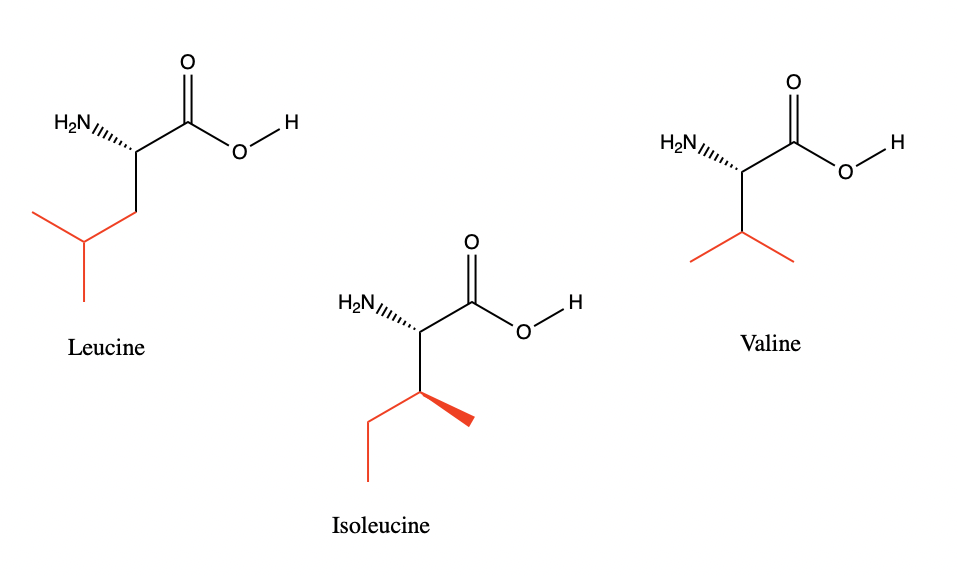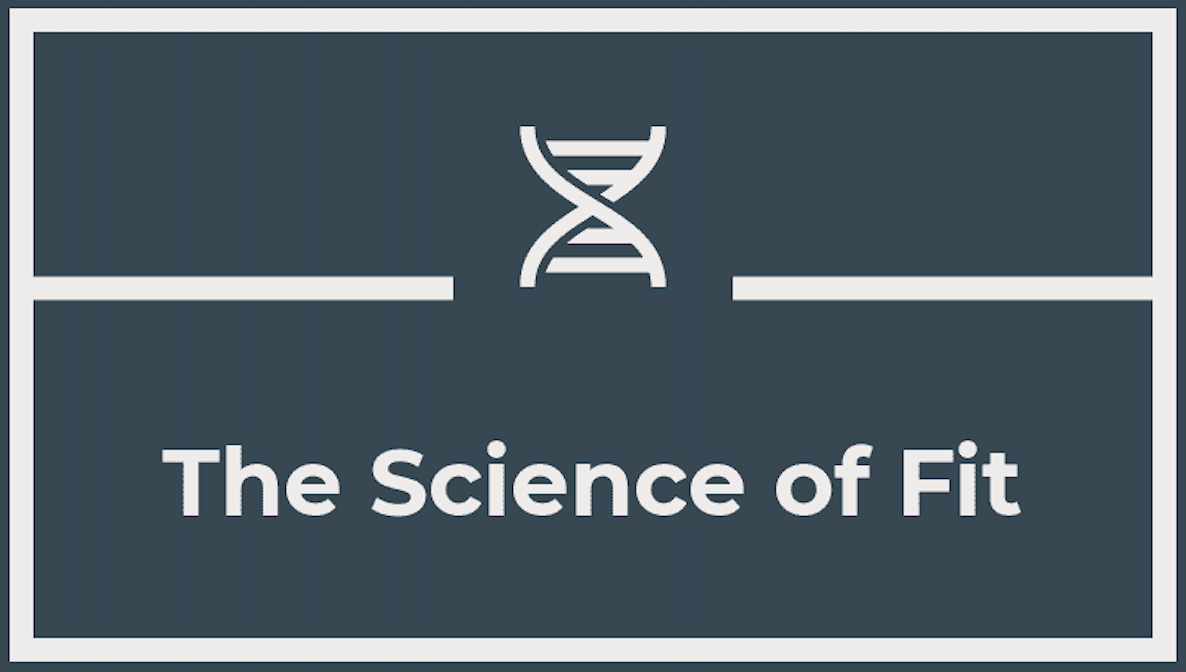Performance Supplements
From the average consumer to the dedicated athlete, learn what will best work for you.
While the term "performance" may sound intimidating to some, many of these supplements can and should be used my more than just high level athletes. The majority of supplements provide benefits for everyday life. That being said, some supplements are more oriented towards the performance minded than others so keep reading to find out what works best for you.
Introduction:
Performance supplements represent a category of nutritional aids specifically designed to enhance physical capabilities, optimize training adaptations, and support recovery in athletes and fitness enthusiasts. These supplements encompass a diverse array of substances, ranging from amino acids and protein powders to ergogenic aids and herbal extracts, each strategically formulated to target distinct aspects of athletic performance and health.
In the realm of sports and fitness, the pursuit of peak performance often extends beyond training and diet alone. Performance supplements play a pivotal role in providing athletes with the competitive edge they seek, whether by boosting energy levels, improving endurance, facilitating muscle growth, or accelerating recovery post-exercise. By augmenting physiological processes and addressing nutritional demands, these supplements aim to optimize athletic performance across various disciplines and levels of competition.
The uses of performance supplements are multifaceted and tailored to meet the specific demands of different sports and individual training regimens. They are widely employed to enhance strength and power output, promote lean muscle mass development, and delay fatigue during prolonged exertion. Additionally, supplements are instrumental in supporting hydration, electrolyte balance, and immune function, crucial for maintaining overall health and performance consistency in athletes.
As research continues to elucidate the mechanisms and efficacy of performance supplements, their integration into sports nutrition strategies continues to evolve. This review explores the diverse applications of performance supplements, examining their role in enhancing physical performance, supporting recovery, and optimizing training outcomes. By delving into the benefits and considerations associated with these supplements, this exploration aims to provide insights into their strategic use within the context of athletic achievement and well-being.
List of Services
Branched Chain Amino Acids (BCAAs)

Before we dig into what a branched chain amino acid is (BCAA), it is important to understand what an amino acid is. Amino acids are the building blocks for proteins in our body. There are 20 different amino acids found in human proteins. Of these 20, only 3 of them are considered BCAAs due to their structure. Each amino acid has a backbone consisting of an amino end and a carboxyl end. On the alpha carbon (the carbon adjacent to the carboxyl group) each amino acid exhibits a unique side chain. For BCAAs, these side chains consist of a branched carbon formation as highlighted below.
Now that we know what a BCAA is, what are they good for? A lot of people have probably seen an advertisement for some sort of BCAA supplement at one point or another. These ads are almost always targeted at the fitness minded individual. It is important to note that branched chain amino acids fall under the category of essential amino acids (EAAs). EAAs cannot be produced by the human body and therefore must be consumed. BCAAs in particular are often touted as being able to increase muscle mass, and while that may be true, it is not quite that simple.
BCAAs are composed of Valine, Leucine, and Isoleucine. These amino acids play a large role in muscle protein synthesis. For decades it was believed that BCAAs alone could increase muscle protein synthesis, however, it appears more that they are necessary, but not sufficient. The other 6 EAAs which are often glanced over also need to be supplemented to obtain the best results. In fact, with BCAA supplementation alone, it was shown that muscle protein turnover decreased in general. This means that while muscle mass may stay consistent, strength may decrease. This is due to less breakdown of muscle post exercise as well as less synthesis of new tissue.
That being said, BCAAs are still a great supplement when utilized correctly. It is important for people who engage in intensive endurance activities to consume enough BCAAs, especially Leucine. This is because such activities can break down muscle tissue quickly in order to use it for fuel. This is one reason why long distance runners are usually very skinny. Branched chain amino acids can help combat this degradation of muscle. Therefore, it makes sense that it has been shown for BCAAs to also reduce fatigue and soreness during as well as post workout. If there is less damage to the muscle from exercise, there will be less delayed onset muscle soreness (DOMS). It is important to note that this conclusion is not entirely supported by some experiments.
So let's discuss exactly how BCAAs work and why at least in theory, they can promote muscle growth. During exercise, BCAAs are used as energy substrates and result in what is called BCAA oxidation, or the breakdown of BCAAs. This process is due to the activation of the enzyme branched-chain-alpha-keto-acid-dehydrogenase (BCKDH). The pathway gets much more complex, but BCKDH has been researched and shown to be the main player in regulating BCAA breakdown. On the anabolic side, branched chain amino acids have been shown to increase the activation of the mTOR pathway through several different methods. When talking about muscle growth, much of the conversation often comes back to activation versus inhibition of the mTOR pathway so it is no surprise that it comes into play here.
Aside from fitness, BCAA supplementation has been investigated in its effects on cirrhosis of the liver, diabetes, cancer, maple syrup urine disease, as well as other illnesses. While BCAA consumption can be beneficial to some, it can in fact be harmful for others who may suffer from certain medical complications.
How necessary is it to supplement with BCAAs? This question ultimately boils down to how seriously you are trying to put on muscle. The majority of people are able to obtain the required amount of BCAAs through their normal diet. However, if you are someone who works out regularly or is trying to put on muscle mass, supplementing with BCAAs are a solid way to assist in this process. Many supplements on the market, including even common protein powders, now come with additional BCAAs and EAAs. Consumption of all EAAs will help optimize muscle turnover in order to improve performance as well as muscle size.
Beetroot Juice / Beet Powder
Describe the item or answer the question so that site visitors who are interested get more information. You can emphasize this text with bullets, italics or bold, and add links.Beta Alanine
Describe the item or answer the question so that site visitors who are interested get more information. You can emphasize this text with bullets, italics or bold, and add links.Caffeine
Describe the item or answer the question so that site visitors who are interested get more information. You can emphasize this text with bullets, italics or bold, and add links.Citrulline Malate
Describe the item or answer the question so that site visitors who are interested get more information. You can emphasize this text with bullets, italics or bold, and add links.Conjugated Linoleic Acid (CLA)
Describe the item or answer the question so that site visitors who are interested get more information. You can emphasize this text with bullets, italics or bold, and add links.Creatine
Creatine, a naturally occurring compound found in muscle cells, has garnered extensive attention for its potential benefits across various domains, including sports performance, exercise physiology, and therapeutic applications. This scientific article provides a thorough exploration of creatine supplementation, encompassing its metabolic mechanisms, performance-enhancing effects, and emerging therapeutic roles. From its influence on cellular energy metabolism to its applications in diverse clinical conditions, creatine continues to captivate researchers and practitioners alike.
Intro
Creatine, a nitrogenous organic acid, is synthesized endogenously and obtained through dietary sources, particularly animal products. Its role in cellular energy metabolism, specifically in the form of phosphocreatine, has led to widespread interest in creatine supplementation and its potential applications in health and performance.
Cellular Energetics and the Phosphocreatine System:
Creatine is a key player in the phosphocreatine (PCr) system, contributing to the rapid regeneration of adenosine triphosphate (ATP) during short bursts of high-intensity activity. This unique capacity of creatine has implications for energy availability during brief, explosive efforts.
Ergogenic Effects on Exercise Performance:
Extensive research supports the ergogenic effects of creatine supplementation on various aspects of exercise performance. Creatine has been shown to enhance strength, power, and muscle endurance, particularly in activities characterized by intermittent, high-intensity efforts. The mechanisms involve increased PCr availability and augmented cellular energy reserves.
Muscle Hypertrophy and Cellular Adaptations:
Creatine supplementation has been linked to muscle hypertrophy, potentially through cellular hydration, increased satellite cell activity, and enhanced protein synthesis. The anabolic effects of creatine contribute to its popularity among athletes and fitness enthusiasts seeking to optimize muscle development.
Cognitive Function and Neuroprotective Effects:
Emerging research suggests that creatine may have cognitive benefits, with potential applications in neurodegenerative conditions. Creatine's neuroprotective effects are thought to stem from its ability to maintain cellular energy homeostasis and act as an antioxidant. Studies exploring creatine's impact on cognitive function and brain health continue to expand.
Clinical Applications and Therapeutic Potential:
Creatine has shown promise in various clinical conditions, including neuromuscular disorders, neurodegenerative diseases, and metabolic syndromes. The potential therapeutic applications of creatine extend to conditions such as muscular dystrophy, Parkinson's disease, and mitochondrial disorders, where its role in cellular energy metabolism is leveraged.
Forms and Dosage of Creatine Supplementation:
Various forms of creatine supplements are available, with creatine monohydrate being the most researched and widely used. Dosage recommendations typically involve a loading phase followed by a maintenance phase. However, more recent research suggests that lower, continuous doses may also be effective.
Safety and Adverse Effects:
Creatine supplementation is generally considered safe, with extensive research supporting its safety profile. Adverse effects are minimal, with occasional reports of gastrointestinal discomfort. However, long-term studies on the safety of creatine supplementation are ongoing.
Considerations for Special Populations:
Creatine's effects in special populations, such as children, the elderly, and pregnant individuals, are areas of ongoing research. Preliminary findings suggest potential benefits in certain clinical contexts, but further investigation is needed to establish guidelines for these populations.
Creatine supplementation, with its well-established performance-enhancing effects and emerging therapeutic potential, continues to be a subject of intense scientific inquiry. This comprehensive examination highlights the metabolic mechanisms, performance benefits, and diverse applications of creatine, providing a foundation for informed use in both athletic and clinical settings. As research in this field progresses, the multifaceted roles of creatine in health and performance are likely to evolve, solidifying its position as a versatile and intriguing nutritional supplement.
D-Aspartic Acid (DAA)
Describe the item or answer the question so that site visitors who are interested get more information. You can emphasize this text with bullets, italics or bold, and add links.Dehydroepiandrosterone (DHEA)
Dehydroepiandrosterone (DHEA) is a steroid hormone produced by the adrenal glands, gonads, and brain. It serves as a precursor to various sex hormones, including testosterone and estrogen. DHEA levels decline with age, leading to interest in its potential roles in aging, health, and disease. Here's an overview of the science behind DHEA:
1. Endogenous Production:
DHEA is produced naturally in the body, primarily by the adrenal glands. The synthesis of DHEA is influenced by adrenocorticotropic hormone (ACTH) and can be converted into other hormones, such as androgens (e.g., testosterone) and estrogens (e.g., estradiol).
2. Precursor to Sex Hormones:
DHEA is a precursor to both male and female sex hormones. In males, it can be converted to testosterone, while in females, it can be converted to estrogen. This conversion occurs in various tissues, including the adrenal glands, ovaries, and testes.
3. Age-Related Decline:
DHEA levels tend to peak in the late teens or early twenties and decline steadily with age. By the time individuals reach their 70s, DHEA levels may be only a fraction of what they were in early adulthood. The age-related decline has led to investigations into the potential effects of DHEA supplementation on various aspects of health.
4. Potential Impact on Aging:
Due to its decline with age, DHEA has been studied for its potential role in aging and age-related conditions. Some studies have explored the effects of DHEA supplementation on physical performance, muscle strength, and overall well-being, with mixed results.
5. Cognitive Function:
DHEA has been investigated for its potential impact on cognitive function and memory. Some studies suggest a potential link between higher DHEA levels and better cognitive outcomes, particularly in older adults. However, more research is needed to establish definitive conclusions.
6. Immune Function:
DHEA has immunomodulatory effects and may influence the immune system. Some studies suggest that DHEA supplementation could have benefits in certain autoimmune conditions, although more research is required to confirm these effects.
7. Cardiovascular Health:
Research has explored the potential relationship between DHEA levels and cardiovascular health. Some studies have suggested associations between lower DHEA levels and increased cardiovascular risk, but the mechanisms and clinical implications are still being investigated.
8. Bone Health:
DHEA has been studied for its potential impact on bone density. Some research suggests a positive association between higher DHEA levels and bone health, particularly in postmenopausal women.
9. Potential Therapeutic Applications:
DHEA has been investigated as a potential therapeutic agent in conditions such as adrenal insufficiency, systemic lupus erythematosus (SLE), and depression. However, more research is needed to establish its efficacy in these contexts.
10. Safety Considerations:
DHEA supplements are available, but caution is advised, especially without medical supervision. The long-term safety and potential side effects of DHEA supplementation are still areas of active research.
In conclusion, the science of DHEA encompasses its role as a precursor to sex hormones, its age-related decline, and its potential implications for various aspects of health and aging. While DHEA supplementation has been explored in different contexts, more research is needed to fully understand its mechanisms of action, efficacy, and safety in various populations and conditions. Individuals considering DHEA supplementation should consult with healthcare professionals, especially given the potential hormonal effects and individual variability.
Ecdysterone
Describe the item or answer the question so that site visitors who are interested get more information. You can emphasize this text with bullets, italics or bold, and add links.Fenugreek
Describe the item or answer the question so that site visitors who are interested get more information. You can emphasize this text with bullets, italics or bold, and add links.Glutamine
Describe the item or answer the question so that site visitors who are interested get more information. You can emphasize this text with bullets, italics or bold, and add links.Green Tea Extract
Describe the item or answer the question so that site visitors who are interested get more information. You can emphasize this text with bullets, italics or bold, and add links.Hydroxymethylbutyrate HMB
Hydroxymethylbutyrate (HMB) is a compound that plays a role in protein metabolism, particularly in muscle tissue. It is a metabolite of the essential amino acid leucine, which is one of the three branched-chain amino acids (BCAAs). Here's a closer look at the science of hydroxymethylbutyrate:
1. Synthesis and Metabolism:
HMB is derived from the breakdown of leucine, an essential amino acid obtained from the diet. Leucine is metabolized in the body to form alpha-ketoisocaproate (α-KIC), and a portion of α-KIC is then converted to HMB.
2. Role in Protein Synthesis:
One of the primary roles of HMB is to influence protein metabolism, particularly protein synthesis and protein breakdown in muscle tissue. It has been suggested that HMB may help promote protein synthesis while simultaneously inhibiting protein breakdown.
3. Anti-Catabolic Effects:
HMB is often referred to as an anti-catabolic agent, meaning it may help reduce the rate of protein breakdown or muscle protein degradation. This anti-catabolic effect is thought to contribute to its potential benefits in the context of muscle preservation and recovery.
4. Muscle Mass Preservation:
Research suggests that HMB supplementation may have positive effects on muscle mass preservation, especially during periods of muscle wasting or conditions associated with muscle loss, such as aging, illness, or injury.
5. Exercise Performance:
Some studies have investigated the impact of HMB supplementation on exercise performance, particularly in resistance training and high-intensity activities. While findings are mixed, there is evidence to suggest that HMB supplementation may support strength gains, muscle power, and recovery.
6. Immunomodulatory Effects:
HMB has been explored for its potential immunomodulatory effects, including its impact on inflammation. Some studies suggest that HMB may have anti-inflammatory properties, but more research is needed to fully understand its mechanisms in this regard.
7. Forms of HMB:
HMB is available in different forms, with calcium β-HMB and free acid HMB being the most common. The choice of form can influence factors such as absorption and bioavailability.
8. Dosage and Supplementation:
The optimal dosage of HMB can vary, but typical recommendations for HMB supplementation range from 1.5 to 3 grams per day. It is often recommended for individuals engaged in resistance training or those seeking to support muscle health and recovery.
9. Safety:
HMB is generally considered safe when used at recommended dosages. However, individuals should consult with healthcare professionals before starting any new supplementation regimen, especially those with pre-existing medical conditions.
10. Future Research:
Ongoing research continues to explore the potential applications of HMB, including its effects on different populations, its mechanisms of action, and its role in promoting overall health.
In summary, hydroxymethylbutyrate is a metabolite of leucine with potential benefits for muscle protein metabolism, muscle mass preservation, and exercise performance. While research on HMB is still evolving, it is considered a safe and promising nutritional supplement, particularly in the context of muscle health and athletic performance.
Phosphatidic Acid (PA)
Describe the item or answer the question so that site visitors who are interested get more information. You can emphasize this text with bullets, italics or bold, and add links.Protein Powder (Multiple)
Describe the item or answer the question so that site visitors who are interested get more information. You can emphasize this text with bullets, italics or bold, and add links.Sodium Bicarbonate
Describe the item or answer the question so that site visitors who are interested get more information. You can emphasize this text with bullets, italics or bold, and add links.Taurine
Describe the item or answer the question so that site visitors who are interested get more information. You can emphasize this text with bullets, italics or bold, and add links.Tribulus Terrestris
Describe the item or answer the question so that site visitors who are interested get more information. You can emphasize this text with bullets, italics or bold, and add links.Turkesterone
Describe the item or answer the question so that site visitors who are interested get more information. You can emphasize this text with bullets, italics or bold, and add links.Tyrosine
Describe the item or answer the question so that site visitors who are interested get more information. You can emphasize this text with bullets, italics or bold, and add links.ZMA
Describe the item or answer the question so that site visitors who are interested get more information. You can emphasize this text with bullets, italics or bold, and add links.


